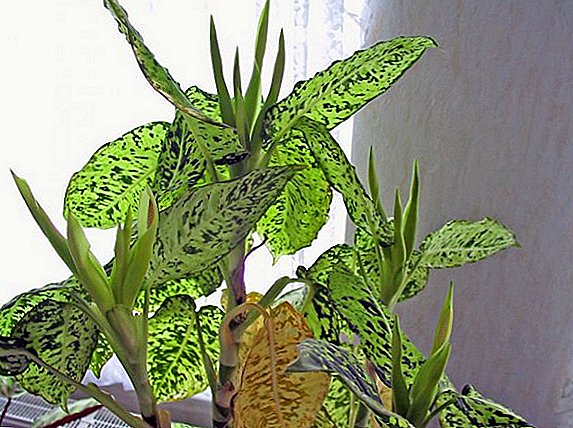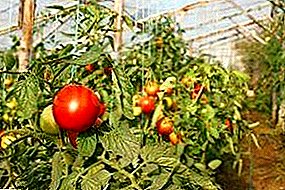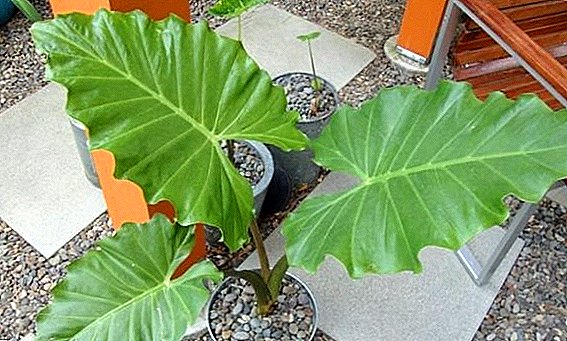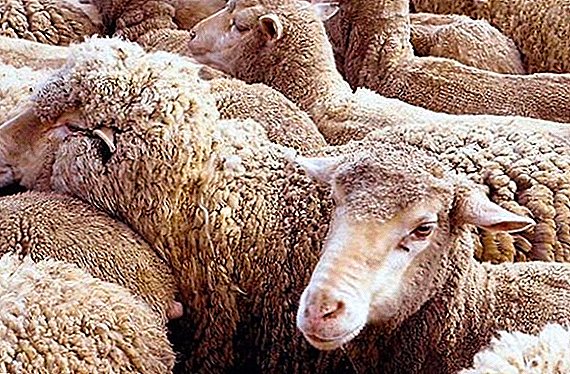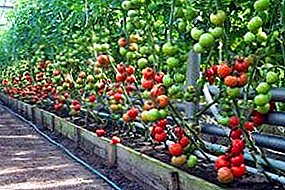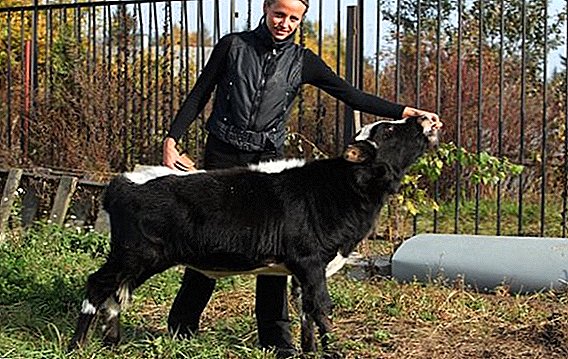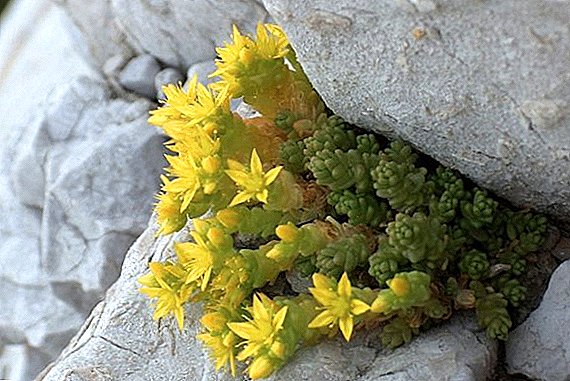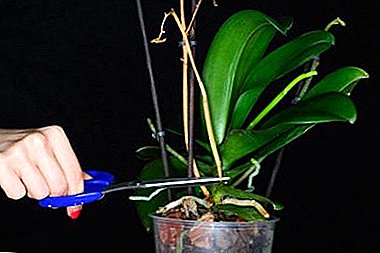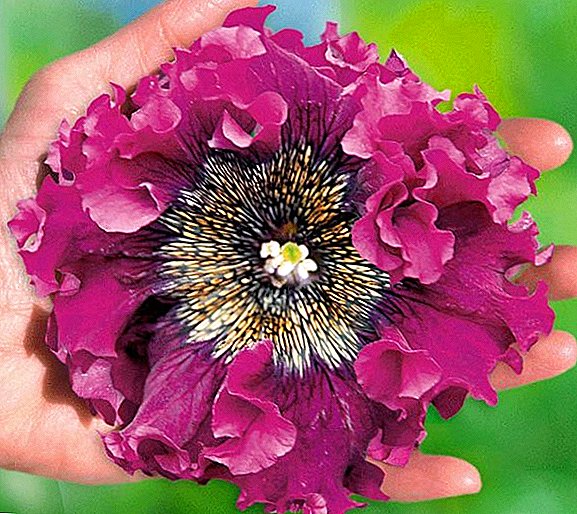
Petunia refers to those plants that do not need a special presentation. This flower has long been loved by many gardeners, both in our country and around the world. The plant has been deeply rooted in our flowerbeds, lawns, balconies and window sills for more than a decade. And this is no accident: petunia is unpretentious, it grows quickly and pleases us with its bright color from the beginning of summer to the first cold weather. Grandiflora multicolored petunia cascades are the best way to give vital energy to the cold gray concrete of big cities.
But, despite its simplicity, not all domestic gardeners manage to grow a healthy and flowering plant. In addition, the characteristics of the life of the species make their adjustments to the general rules of care for this flower, which directly affects the results of growing the plant. Therefore, before you get this flower, you need to find out what is famous for Grandiflora petunia, and what it is.

Characteristics and application of the group
Grandiflora (grandiflora) petunia is a herbaceous perennial plant with a branched stem. The flower belongs to the family Solanaceae and is an aboriginal species of the hot tropical forest zones of South America.
Did you know? Petunia was discovered by the famous French scientist and naturalist Jean Baptiste Lamarck. In the worst enemies of the garden: a list of the most common weeds in 1793, the flower came to the scientist in the form of a herbarium, brought from Uruguay.
The height of the large-flowered petunia is in the range of 20-40 cm, but there are varieties that can reach a height of about 60 cm. In this case, the stem can be either upright, or creeping or densely branched. On it are formed rounded shoots of green color, which are abundantly covered with hairs. The leaves are entire, different in shape and size, arranged alternately on the flower.

The greatest pride of grandiflora is its large, often single flowers with a diameter of about 10-12 cm. They are formed on short pedicels, have two perianths and can be simple or terry. Their coloring is varied. There are varieties with flowers from a delicate pink shade to a strict purple, with fringing or spotty patches. Usually, the period of flowering of petunias grandiflora lasts from the beginning of June to the onset of the first cold weather. After flowering on the plant, one can observe the appearance of a fruit-box, from which small seeds are poured out after maturation.
Also find out about growing terry, ampelnoe, cascade petunias
Large-flowered petunias deservedly occupy one of the first places in terms of prevalence among ornamental plants. This was facilitated by the unique ability of this species to adapt to a variety of habitats, from hot tropics to cold northern regions. It arose thanks to the hard work of many geneticists to breed new varieties.

Grandflora petunia blooming is an integral part of many flower beds, rabatok, curbs, balconies and rooms. Modern varieties have expanded the possible habitat conditions of this flower, which made it possible for petunias to grow in a limited amount of substrate in hanging baskets, containers, pots, etc. But first of all, petunias chose their place in the flowerbed, as a successor to the bulbous flowers, or in a mixborder (flowerbed with free borders consisting of various plants).
Did you know? PPetunia was originally called Nicotinia axillaris. But it was soon transformed into Petunia axillaris, from the word in the old Brazilian dialect "Petun", which means "tobacco".
Varieties
Large-flowered petunias known for the abundance of varieties bred for more than one decade. Among the countless number of hybrids, only a few varieties enjoy particular attractiveness among gardeners. Hybrids are popular primarily due to improved aesthetic and physiological characteristics, which makes it possible to cultivate petunia without much difficulty. We give a brief description of several successful varieties.
Did you know? Modern breeders managed to bring a variety of petunia, which is able to grow at a temperature of -4 ° C. This made it possible to significantly expand the range of cultivation of this flower, and also made it possible to admire the flowering of petunias in the temperate climate zone until the onset of frosts.
Petunia Grandiflora "Dreams": cultivated by Pan American. The plant shows increased resistance to adverse environmental conditions, including low temperatures. This variety is associated with a series of five hybrids, which are distinguished by their compactness, low stem and excellent compatibility with each other. Flowers hybrids mainly white, pink, red and purple hues.

Petunia Grandiflora "Aladdin": a compact plant with a height of no more than 40 cm and a flower diameter of up to 10 cm. The variety includes several hybrids with a variety of flower color in white, pink, red and light purple hues. Hybrids begin to bloom early, but the flowering period continues until the first serious drop in temperature. The variety is ideal for planting in open ground, and for planting in a pot.

Petunia Grandiflora "Limbaugh G. P": a new generation of hybrid petunias from the Limbo company. The plants are preferably undersized (up to 20 cm in height), but they thrive perfectly in the horizontal direction, as a result of which a large area bush is formed. This feature allows you to use a smaller number of plants per square meter in the design of flower beds. The variety blooms profusely over a long period. The color range is in the range of pink shades (coral, salmon). Flowers in diameter do not exceed 12 cm.

Self-growing seedlings
The widespread distribution of large-flowered petunias has caused a lot of controversy and contradictory reports about how to properly grow this plant from seeds and whether to even do it, because getting quality seedlings is a very troublesome process. Summing up all the existing “for” and “against”, we can say that petunia, although an unpretentious flower, but the care and cultivation of seedlings of seedlings of this species is not an easy task. Today we will try to reveal all the secrets of this procedure and provide information so that the cultivation of seedlings is not difficult, even for beginners.

Optimal timing
If you are an experienced gardener and you have the technical ability to highlight petunia seedlings, sowing seeds for seedlings for further planting in open ground can be made in February. When you have no such opportunity, Growing sprouts of this flower usually begin closer to spring and heat.in the second half of March. Strict observance of planting dates will help to get a healthy plant, suitable for long-term flowering. In the case of growing a flower for indoor purposes, it is possible to germinate seeds at any time of the year.
It will be useful for you to learn all about the secrets of petunia fertilizer.
Capacity and soil
To obtain seedlings, the soil for sowing must be loose, not dense. It is also worth taking care that it is light and has in its composition the necessary amount of nutrients for plant emergence. We advise you to prepare the substrate as follows: peat, turf or leaf soil and rotted humus are mixed in equal parts, a small amount of sand is added to the mixture (up to 20% of the total mass).

An important step is the choice of capacity for germination of seed. The germination of petunia seeds does not require huge containers, for this purpose small vessels or special garden cassettes are best suited. You can also use simple plastic cups. The main thing is to follow a simple but important rule: to obtain grandiflora petunia seedlings, the height of the container should be in the range of 10-15 cm.
Sowing seeds
Sowing seeds is carried out as follows:
- prepared for germination in less than a day, the substrate is packed into a special container. The vessel should not be completely filled, to the brim - at this stage it is necessary to leave at least 20% of the free space of the total engine capacity;
- then the rest of the soil is rubbed through a fine sieve and poured over the main sieve, a layer of approximately 1 cm. It is necessary for the seeds to form evenly, their final germination depends on it;
- Petunia seeds are mixed with a small part of dry sand, after which they are sown on the prepared soil in a garden container and leveled;
- after the seed has been introduced into the germination tank, it must be poured abundantly and covered with a transparent film or glass.
Important! It is necessary to sow seeds of a petunia with a stock. Due to the short sunny day at the beginning of spring, their germination rate decreases several times, therefore the seed rate indicated by the manufacturer on the packaging is recommended to be doubled.
Conditions for germination
To successfully germinate the seeds of grandiflora petunias, it is necessary ensure a constant temperature of at least + 20 ° C. In case you have a unique opportunity to provide the future seedlings with a higher temperature, we advise you to choose a temperature regime of about + 26-28 ° C. In such conditions, the seeds will germinate in just a few days, but at elevated temperatures it is necessary to ensure that the soil does not lose its moisture, and if necessary, additionally water the substrate.
Seedling care
After about a week, the seeds germinate and a bright green sprout emerges from them. From this point on, seedlings must be provided with light. For this It is best to carry the pot close to the window, to the natural sources of light. You can use special lamps for seedlings. In this case, it is necessary to provide sprouts with approximately 12 hours of constant illumination, this will speed up the germination process several times. It is best to provide scattered light to sprouts, as they can not withstand direct radiation and dry (especially for natural light sources).
Also during this period, it is necessary to provide high humidity, for this the plants are watered and moistened daily with a hand sprayer. We should not forget that excessive moisture can lead to rotten diseases, so the shoots need to be aired with each occurrence of condensation on the walls of the film or glass.
Hardening seedlings
To plant seedlings in a pot or open ground when reaching the desired size without prior hardening is strictly prohibited. Due to the fact that the plant has sprouted in conditions of high temperature and moisture, a sharp drop in humidity and heat will lead to the death of flowers. Therefore, they must undergo serious training. For this, over several days, it is necessary to gradually reduce the temperature in their habitat to the required one, while it is important to protect the seedlings from sudden heat drops. It is also necessary to prepare the plants for the dry air of our latitude. To do this, daily airing the sprouts from several minutes is gradually increased to several hours, and then completely removed the protective barrier.

Planting seedlings on the site
After 3-4 leaflets form on the seedlings, petunias are ready for planting and caring for them in the open field. This process is not difficult even for a beginner. However, there are several secrets that will help to simplify it, increase the effectiveness of rooting seedlings and minimize all the risks of damaging plants.
Important! Fertilizing soil with manure before planting petunias is strictly prohibited. This fertilizer in almost 100% of cases is the cause of the fungal disease of flowers.
Optimal timing
Planting of seedlings of petunia is carried out only when all the sharp nighttime temperature drops remain behind. For this the best period will be the end of May - the beginning of June.
Choosing a place
The planting of petunia is made on open areas without weeds and with a sufficient amount of sunlight. It is best suited for this loamy or sandy soil with a sufficient level of fertility. In the specialized literature, it is usually advised to pre-enrich the soil with additional nutrients with the help of fertilizers of natural origin (compost or humus). Large-flowered petunias do not tolerate draftstherefore, it is worthwhile to take care that the flowers are located behind a fence or barrier from other plants.

Process and scheme
Evening time or an overcast day is best suited for landing. as active solar radiation can damage the delicate petunia. In order not to damage the plant, it is necessary to moisten and soften the germination substrate before removing it. It is necessary to take a sapling carefully: for this, they take it by the top leaf, hook it with a wand and pull it out.
Important! After removing the seedling from the germination tank, it is strictly forbidden to shake the soil from the roots, as this may damage the delicate root system of the sprout.
On the prepared and fertilized soil of the flower bed, small holes are dug up; the distance between them should not be less than 15-20 cm, since otherwise the plant will not be able to form a graceful bush of the correct form. After planting around the trunk, it is necessary to create a small depth in the ground, which will retain the necessary moisture near the plant. At the end of the process, you need to pour water abundantly.

Care Tips
Growing petunias is a relatively simple process that does not require special technical tools and scientific knowledge, but to achieve long-term flowering of the plant. it is important to follow some rules of care behind him.
Also, to achieve long-term flowering of petunias, such fertilizers are used as: “Stimulus”, HB-101, “Mortar”, “Kemira”, “BioMaster”, “Master”, “Plantafol”
Watering
Petunia grandiflora is a moisture-loving species.that do not tolerate drought, so you need to water the flower copiously, it is especially important in the hot summer period. The procedure is usually carried out twice a day, in the morning and in the evening. In particularly dry periods, the plant will thank you if you give him a shower or additional moisture with a garden spray. During periods of low nighttime temperatures (late May and early September), it is not worth watering petunia at night, as this may lead to overcooling of its root system.

Top dressing
The plant does not need much feeding, but it is important to remember that flowering is a process that requires additional nutrients. Therefore, to achieve maximum brightness of colors and extend this period to cold weather, you should take care of additional feeding. For these purposes, "Agricol" is perfect for flowering plants, "Aelita-flower" or analogues. Simple potassium nitrate has also proven excellent. The dosage and frequency of use must be observed according to the manufacturer's instructions.

Pruning
To achieve abundant formation of new flowers throughout the warm season, petunia should be regularly cut. To do this, the old inflorescences with young seeds and sluggish flowers are removed with ordinary garden shears or shears. If a regular pruning of the flower is not carried out, the plant will throw all the power to form seeds, which will soon lead to the completion of flowering.
Grandiflora Petunia is a true gift from nature and experienced breeders. This flower is bright, beautiful and not like any other plant. That is why he so quickly won the domestic flower beds, balconies and window sills. Moreover, the simplicity in the care and habitat conditions, as well as the abundance of various varieties make it a suitable type for any purposes florist.


